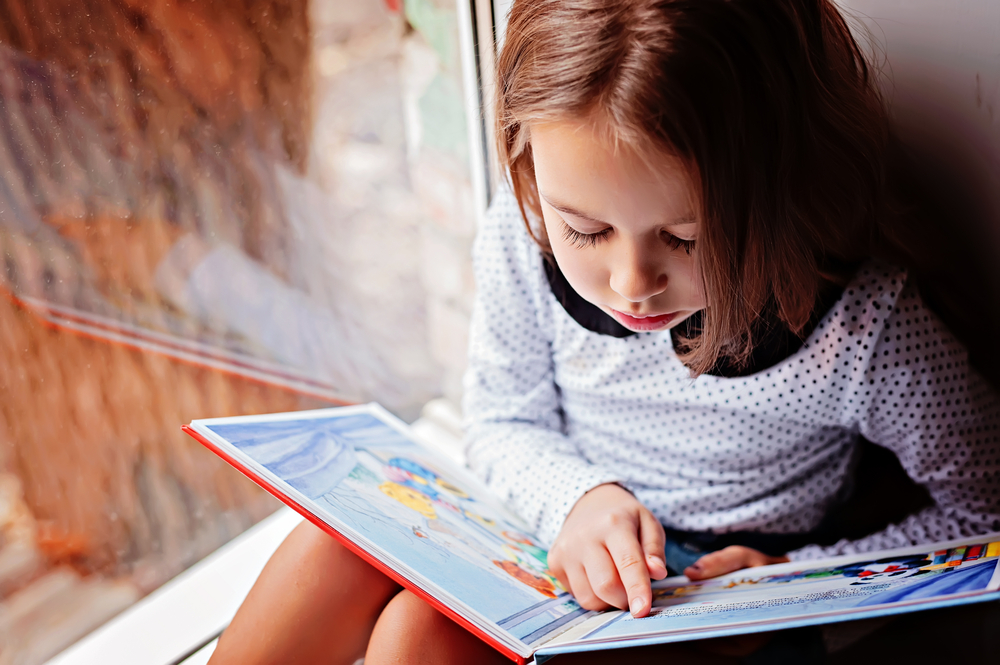Reading comprehension Normal Reading Comprehension Worksheets for 3-Year-Olds
10 filtered results
-
From - To
Boost your little one’s literacy skills with our Reading Comprehension Worksheets for 3-Year-Olds. Designed to spark a love for reading, these colorful worksheets contain fun and engaging activities that help toddlers understand stories and build essential comprehension skills. Each worksheet features simple text and vivid illustrations, perfect for young learners. These resources aim to enhance vocabulary, encourage critical thinking, and improve attention to detail—all crucial for early reading success. Ideal for parents and teachers, our worksheets make learning an enjoyable journey for every child. Visit Kids Academy to explore more!
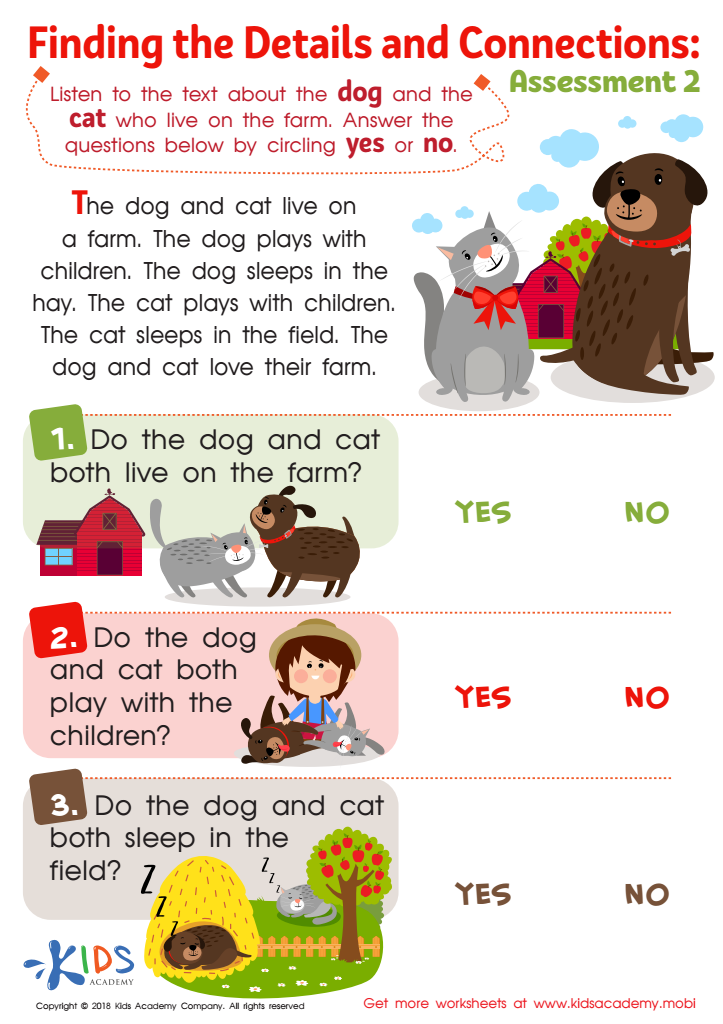

Finding the Details and Connections: Assessment 2 Worksheet
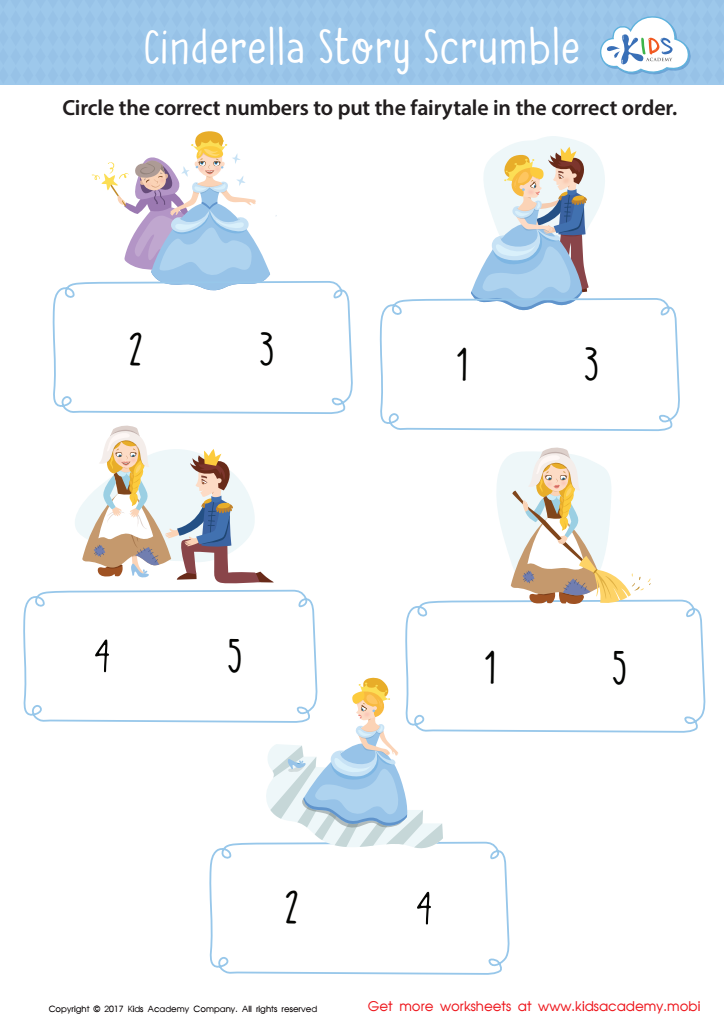

Cinderella Story Sequencing Worksheet
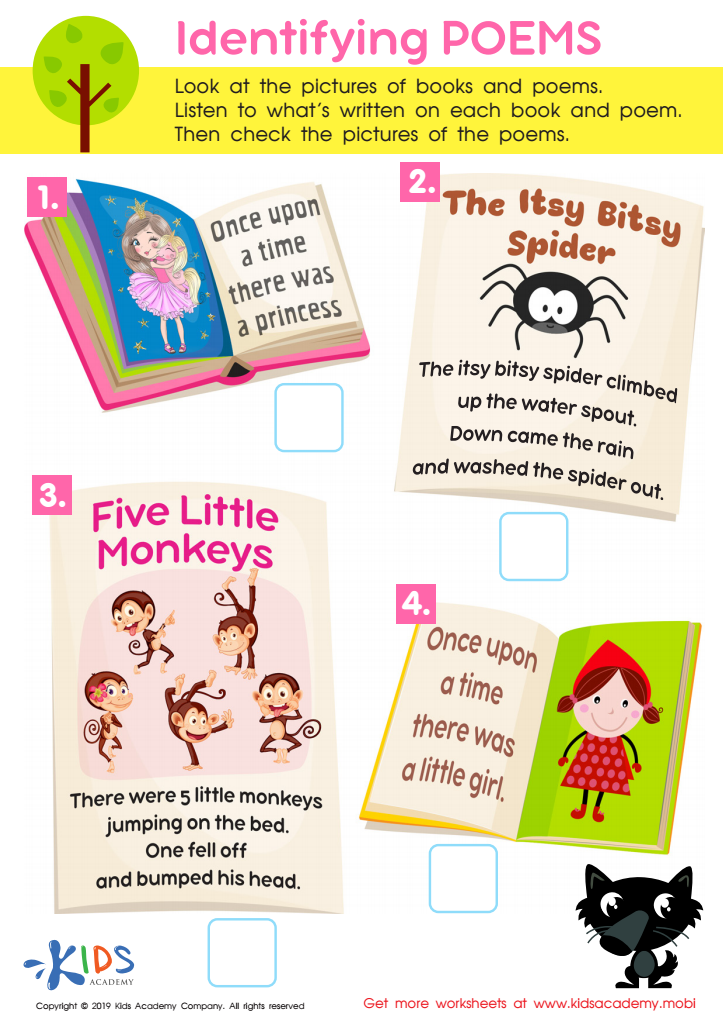

Identifying Poems Worksheet
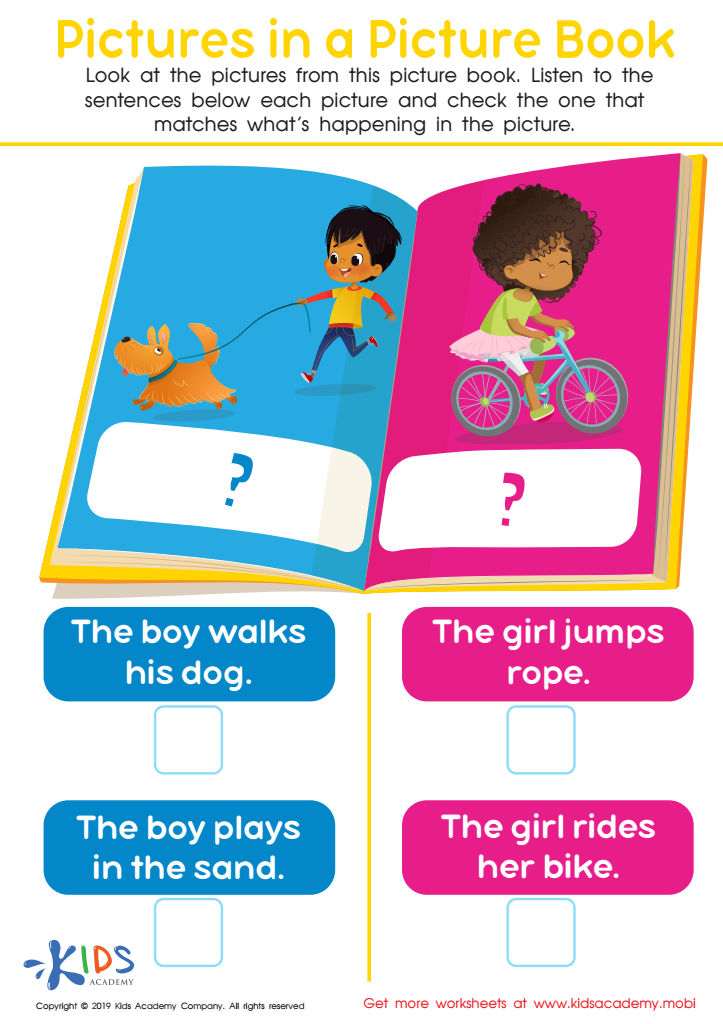

Picture in Books Worksheet
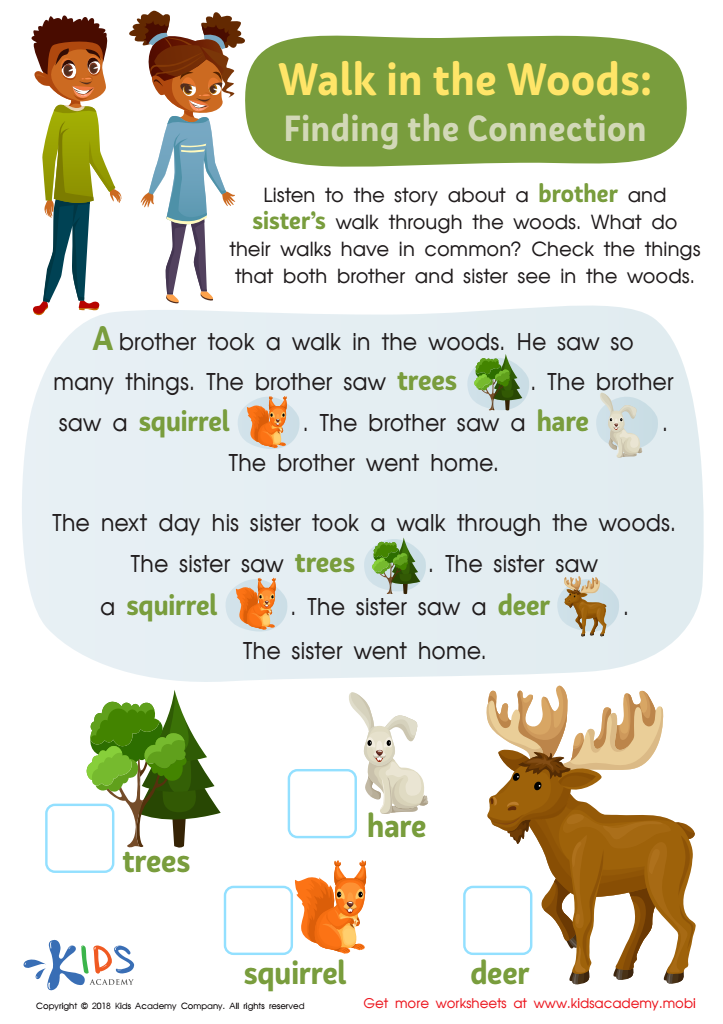

Walk In the Woods: Finding Connections Worksheet


Story Elements: Setting of a Fairy Tale Printable


Questions About Stories: Assessment 2 Worksheet
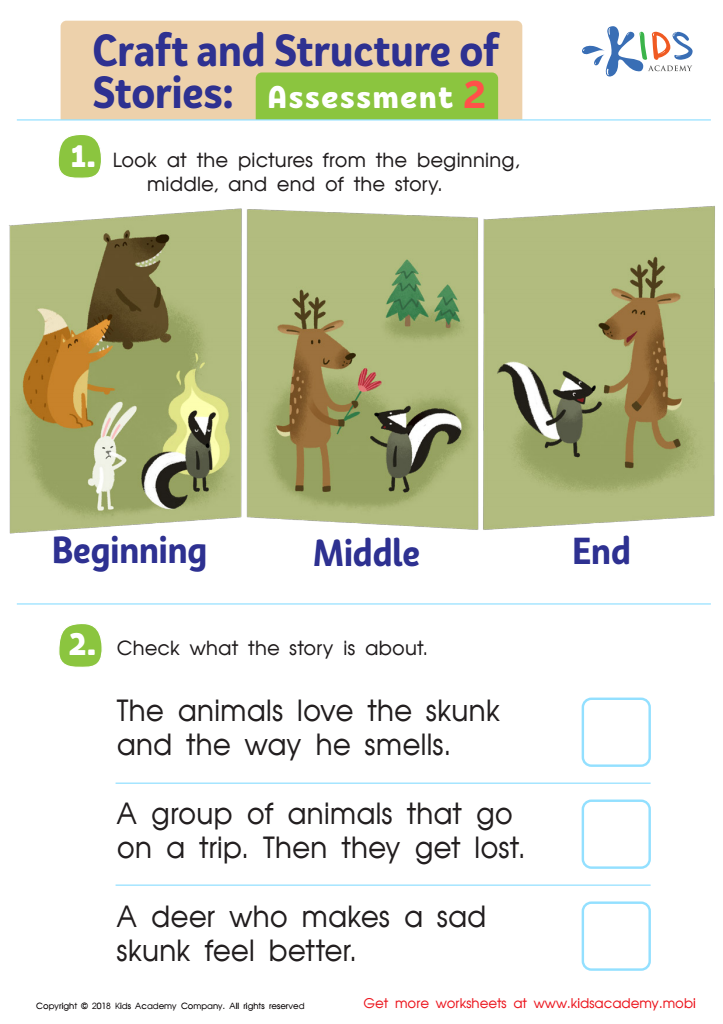

Craft and Structure of Stories: Assessment 2 Worksheet
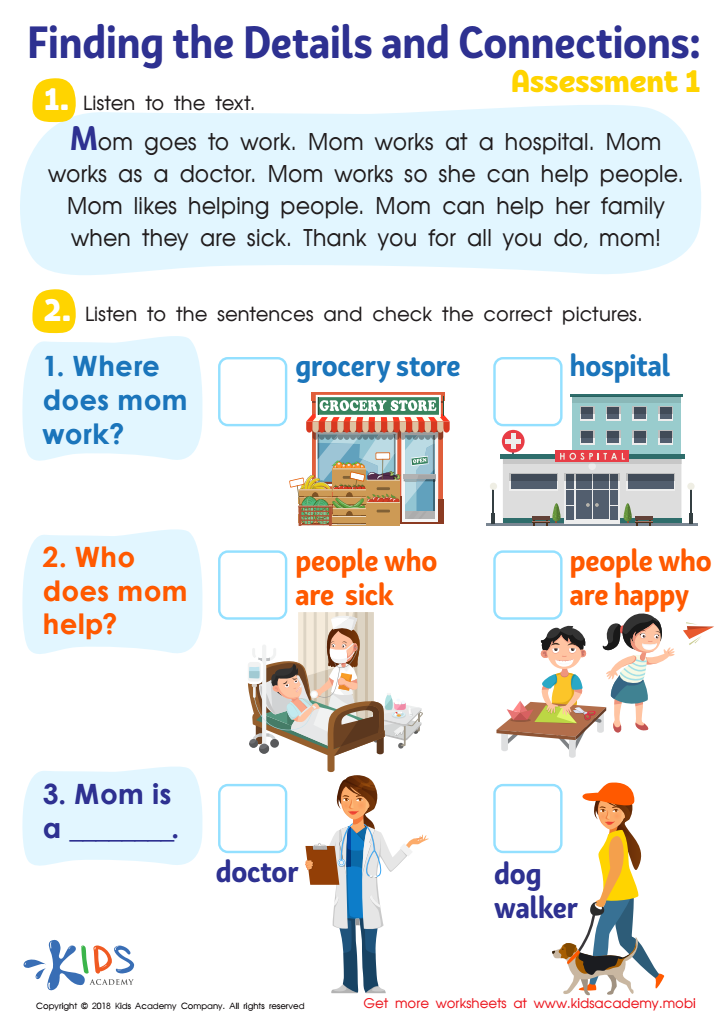

Finding the Details and Connections: Assessment 1 Worksheet
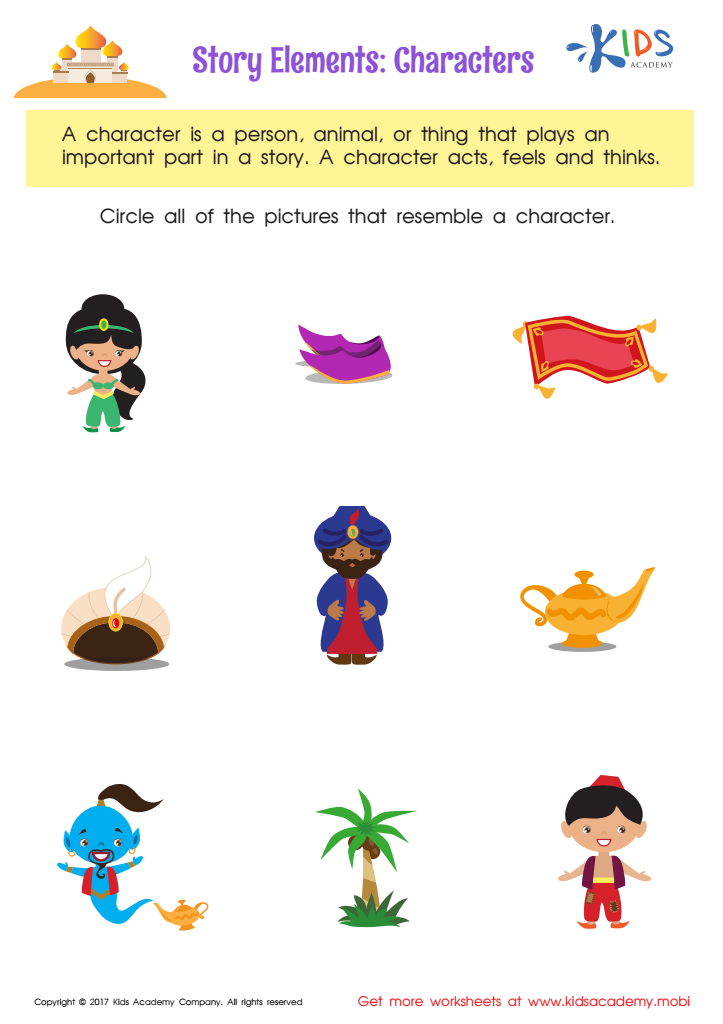

Story Elements Printable
Reading comprehension for 3-year-olds is crucial because it lays the foundation for future learning and development. At this age, children are rapidly expanding their vocabulary and beginning to understand the structure of language. By engaging with books and stories, they not only learn new words but also grasp concepts like sequencing, cause and effect, and basic problem-solving skills.
Parents and teachers play a pivotal role in nurturing these early literacy skills. Reading aloud to children helps them improve their listening skills and enhances their ability to focus. Interactive reading, such as asking questions about the story, encourages children to think critically and make predictions, which are essential components of reading comprehension. Moreover, these reading sessions can boost a child's imagination and creativity, as they visualize characters and settings.
Another important aspect is the emotional bonding that occurs during shared reading time. This bonding fosters a positive attitude towards reading, making children more likely to view it as a pleasurable and rewarding activity.
Overall, investing time in developing reading comprehension skills at an early age can significantly impact a child's academic success and lifelong love of reading. It’s an essential building block for effective communication and cognitive development, setting the stage for more complex skills in the future.
 Assign to My Students
Assign to My Students






